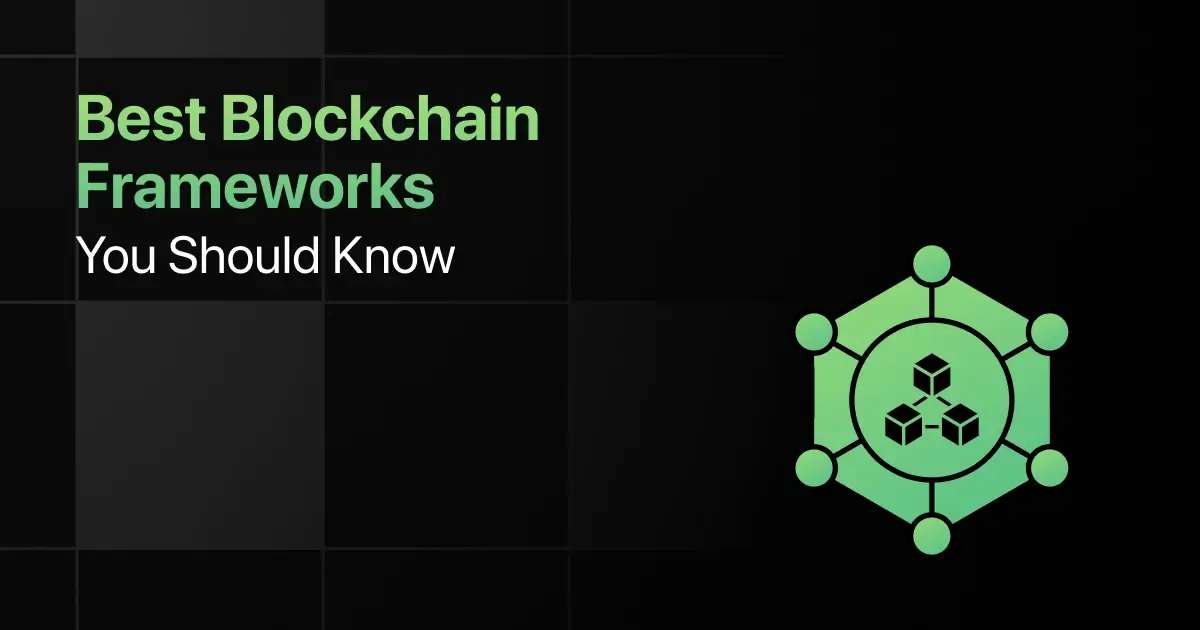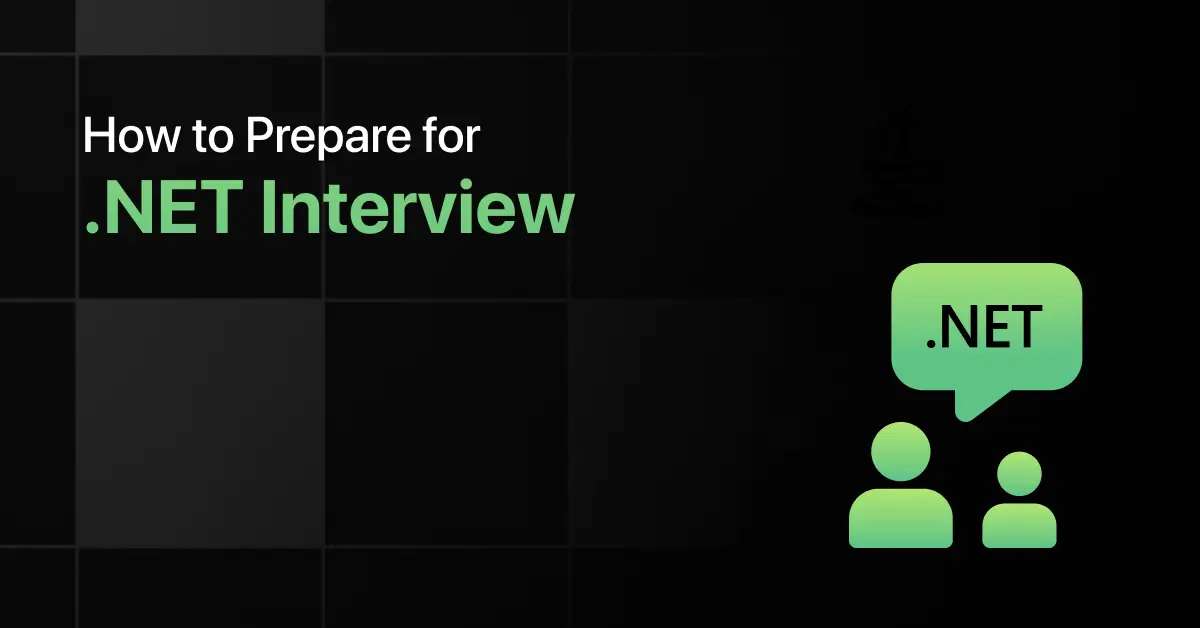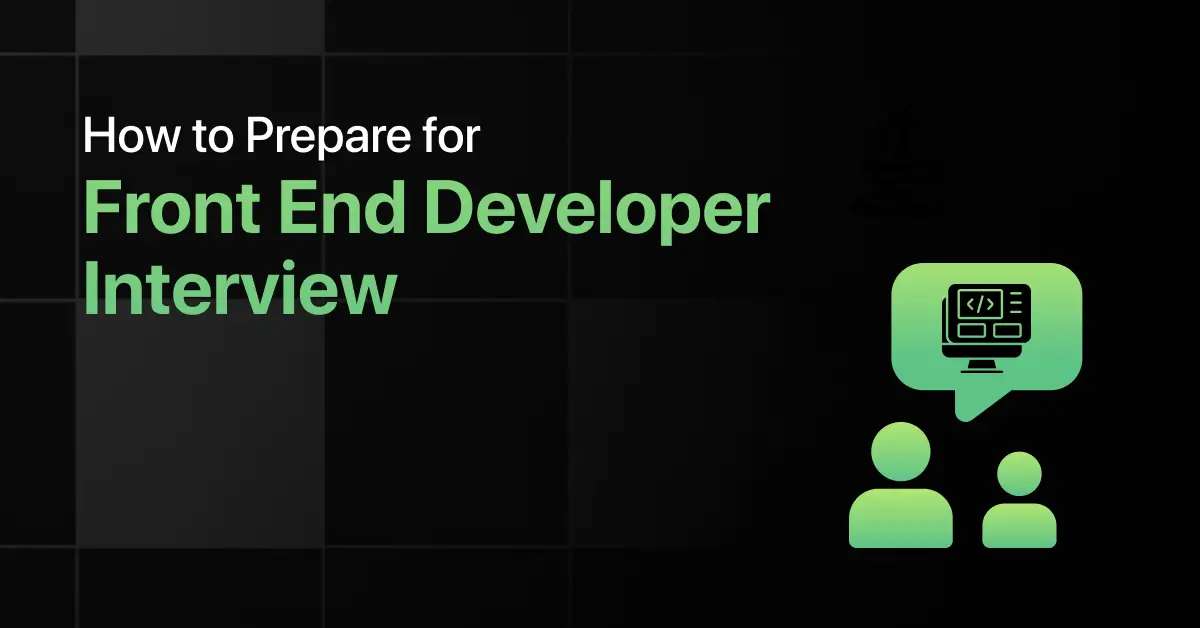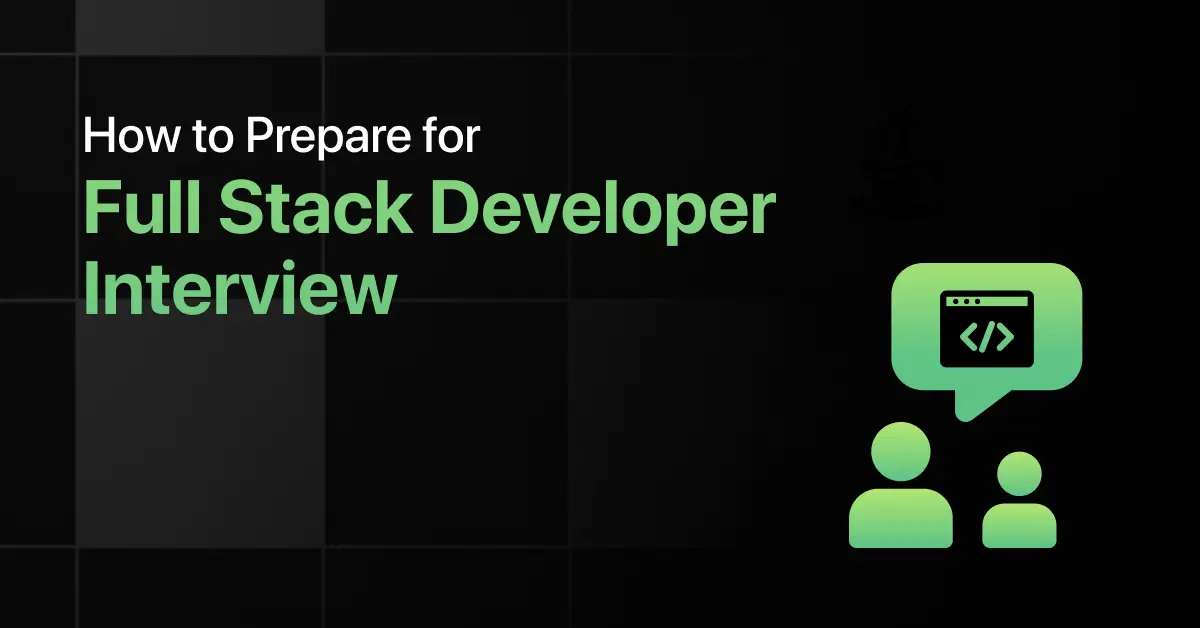Best Blockchain Frameworks You Should Know

Blockchain frameworks are essential tools for developers. They provide a structured foundation to build secure and scalable decentralized applications.
This blog will explore a blockchain framework list and highlight the unique features of the best blockchain frameworks and libraries.
If you’re looking for blockchain frameworks for beginners or aiming to conduct a comparison of blockchain frameworks, this guide has you covered.
Top Blockchain Frameworks for Developers – Overview
Here’s an overview of the top 10 frameworks for developing blockchain technology:
| S.No. | Framework Name | Key Features | Ease of Integration | Download Link |
|---|---|---|---|---|
| 1 | Web3.js | Ethereum Node Interaction, Smart Contract Integration | Easy | Download |
| 2 | Ethers.js | Ethereum Node Interaction, Comprehensive Wallet Management | Easy | Download |
| 3 | Truffle | Smart Contract Compilation, Automated Testing | Medium | Download |
| 4 | Web3.py | Ethereum Node Interaction, Smart Contract Handling | Easy | Download |
| 5 | Brownie | Smart Contract Testing, Automated Deployment | Medium | Download |
| 6 | Go-Ethereum (Geth) | Full Node Implementation, Smart Contract Execution | Medium | Download |
| 7 | Web3j | Ethereum Node Interaction, Smart Contract Integration | Easy | Download |
| 8 | Hyperledger Fabric SDK for Java | Smart Contract Interaction, Blockchain Data Handling | Medium | Download |
| 9 | Py-EVM | EVM Implementation, Smart Contract Testing | Medium | Download |
| 10 | Fabric SDK Go | Smart Contract Interaction, Blockchain Data Handling | Medium | Download |
Most Popular Blockchain Frameworks You Should Know
Below are the 10 popular blockchain frameworks you should know:
1. Web3.js
Web3.js is a collection of libraries. It allows you to interact with a local or remote Ethereum node using HTTP, IPC, or WebSocket.
Popularity:
- Widely used in Ethereum development.
- Strong community support.
- Extensive documentation and examples.
Key Features:
- Ethereum node interaction
- Smart contract integration
- Utility functions for various Ethereum tasks
Learning Curve: Medium
Performance: Efficient for Ethereum-based operations
Compatibility:
- Works with Ethereum nodes.
- Integrates with multiple Ethereum wallets.
Ease of Integration: Easy
Use Cases and Industry Adoption:
- DApp development
- Smart contract management
- Blockchain data retrieval
Job Market Demand:
- High demand in Ethereum projects.
- Used by major blockchain development firms.
2. Ethers.js
Ethers.js is a lightweight library. It is used for interacting with the Ethereum blockchain and its ecosystem.
Popularity:
- Popular for its simplicity and lightweight nature.
- Strong community support.
- Well-documented.
Key Features:
- Ethereum node interaction
- Smart contract utilities
- Comprehensive wallet management
Learning Curve: Easy
Performance: High performance with efficient operations
Compatibility:
- Works with Ethereum nodes.
- Integrates with various Ethereum wallets and tools.
Ease of Integration: Easy
Use Cases and Industry Adoption:
- dApp development
- Smart contract interaction
- Blockchain data handling
Job Market Demand:
- High demand in Ethereum projects.
- Preferred for lightweight applications.
3. Truffle
Truffle is Ethereum’s development environment, testing framework, and asset pipeline.
It is a popular choice among Ethereum developers.
Popularity:
- Widely adopted in the Ethereum community.
- Extensive user base and community support.
- Comprehensive documentation and tutorials.
Key Features:
- Smart contract compilation and deployment
- Automated testing
- Scriptable deployment and migrations
Learning Curve: Medium
Performance: Efficient for managing Ethereum projects
Compatibility:
- Works with Ethereum and other EVM-compatible blockchains.
- Integrates with Ganache and other development tools.
Ease of Integration: Medium
Use Cases and Industry Adoption:
- DApp development
- Smart contract testing and deployment
- Ethereum project management
Job Market Demand:
- High demand for Ethereum development.
- Used by blockchain startups and enterprises.
4. Web3.py
Web3.py is a Python library for interacting with Ethereum. It provides tools to work with Ethereum nodes over HTTP, IPC, or WebSocket.
Popularity:
- Popular in Python-based Ethereum development.
- Strong community and corporate support.
- Extensive documentation and resources.
Key Features:
- Ethereum node interaction
- Smart contract handling
- Comprehensive utility functions
Learning Curve: Easy
Performance: Efficient for Python-based Ethereum operations
Compatibility:
- Works with Ethereum nodes.
- Integrates with various Ethereum wallets and tools.
Ease of Integration: Easy
Use Cases and Industry Adoption:
- DApp development
- Blockchain data retrieval
- Smart contract interaction
Job Market Demand:
- High demand in Python-based Ethereum projects.
- Used by blockchain developers and data scientists.
5. Brownie
Brownie is a Python-based development and testing framework for smart contracts. It is designed to target the Ethereum Virtual Machine (EVM).
Popularity:
- Gaining popularity in the Ethereum community.
- Strong support from developers.
- Well-documented.
Key Features:
- Smart contract testing
- Automated deployment
- Comprehensive debugging tools
Learning Curve: Medium
Performance: High performance with efficient testing and deployment
Compatibility:
- Works with Ethereum and other EVM-compatible blockchains.
- Integrates with various Python libraries.
Ease of Integration: Medium
Use Cases and Industry Adoption:
- Smart contract development and testing
- DApp deployment
- Ethereum project management
Job Market Demand:
- Increasing demand for Python-based blockchain projects.
- Preferred for thorough testing and deployment.
6. Go-Ethereum (Geth)
Go-Ethereum (Geth) is an official Go implementation of the Ethereum protocol. It provides tools for running an Ethereum node.
Popularity:
- Widely used in Ethereum infrastructure.
- Strong community and enterprise support.
- Comprehensive documentation.
Key Features:
- Full node implementation
- Smart contract execution
- Blockchain data storage
Learning Curve: Medium
Performance: High performance for running Ethereum nodes
Compatibility:
- Works with Ethereum.
- Integrates with various blockchain tools.
Ease of Integration: Medium
Use Cases and Industry Adoption:
- Running Ethereum nodes
- Smart contract execution
- Blockchain infrastructure
Job Market Demand:
- High demand for blockchain infrastructure roles.
- Used by enterprises and startups.
7. Web3j
Web3j is a lightweight Java library. It integrates with nodes on the Ethereum blockchain.
Popularity:
- Popular in Java-based blockchain development.
- Strong community support.
- Well-documented.
Key Features:
- Ethereum node interaction
- Smart contract integration
- Comprehensive utility functions
Learning Curve: Easy
Performance: Efficient for Java-based Ethereum operations
Compatibility:
- Works with Ethereum nodes.
- Integrates with various Java tools.
Ease of Integration: Easy
Use Cases and Industry Adoption:
- DApp development
- Blockchain data handling
- Smart contract interaction
Job Market Demand:
- High demand in Java-based blockchain projects.
- Used by blockchain developers and enterprises.
8. Hyperledger Fabric SDK for Java
The Hyperledger Fabric is an SDK for Java. It provides tools for building applications that interact with Hyperledger Fabric blockchains.
Popularity:
- Widely used in enterprise blockchain projects.
- Strong support from the Hyperledger community.
- Extensive documentation.
Key Features:
- Smart contract interaction
- Blockchain data handling
- Network configuration
Learning Curve: Medium
Performance: High performance for enterprise blockchain applications
Compatibility:
- Works with Hyperledger Fabric.
- Integrates with various Java tools.
Ease of Integration: Medium
Use Cases and Industry Adoption:
- Enterprise blockchain applications
- Supply chain management
- Financial services
Job Market Demand:
- High demand in enterprise blockchain roles.
- Used by major corporations and startups.
9. Py-EVM
Py-EVM is an Ethereum Virtual Machine (EVM) implementation in Python. It is used for testing and development purposes.
Popularity:
- Used in Python-based Ethereum projects.
- Strong community support.
- Well-documented.
Key Features:
- EVM implementation
- Smart contract testing
- Blockchain data handling
Learning Curve: Medium
Performance: Efficient for Python-based EVM operations
Compatibility:
- Works with Ethereum and other EVM-compatible blockchains.
- Integrates with various Python tools.
Ease of Integration: Medium
Use Cases and Industry Adoption:
- Smart contract testing
- Blockchain development
- Ethereum infrastructure
Job Market Demand:
- Growing demand in Python-based blockchain projects.
- Used by developers and researchers.
10. Fabric SDK Go
The Fabric SDK Go provides tools for building Web3 applications. It interacts with Hyperledger Fabric blockchains.
Popularity:
- Widely used in enterprise blockchain projects.
- Strong support from the Hyperledger community.
- Extensive documentation.
Key Features:
- Smart contract interaction
- Blockchain data handling
- Network configuration
Learning Curve: Medium
Performance: High performance for enterprise blockchain applications
Compatibility:
- Works with Hyperledger Fabric.
- Integrates with various Go tools.
Ease of Integration: Medium
Use Cases and Industry Adoption:
- Enterprise blockchain applications
- Supply chain management
- Financial services
Job Market Demand:
- High demand in enterprise blockchain roles.
- Used by major corporations and startups.
Final Words
For beginners, starting with the recommended blockchain frameworks in this blog can ease the learning curve.
Mastering the top 10 blockchain frameworks will equip you with the knowledge and tools to build secure and scalable decentralized applications.
Explore More Blockchain Resources
Explore More Frameworks
- Java
- Python
- JavaScript
- HTML
- CSS
- Web Development
- Mobile App Development
- Automation Testing
- PHP
- Machine Learning
- Unit Testing
- Big Data
- Ruby
- Data Science
- DevOps
- C Programming
- Golang
FAQs
The best blockchain frameworks to use are:
- Ethereum
- Hyperledger Fabric
- Corda
- Quorum
- Polkadot
Key features to look for in a blockchain framework include scalability, security, interoperability, and strong community support.
Ethereum and Hyperledger Fabric are the easiest blockchain frameworks to learn for beginners.
Common use cases include smart contracts (Ethereum), enterprise solutions (Hyperledger Fabric), and financial services (Corda).
Some lightweight blockchain frameworks for rapid application development are Lisk, EOSIO, and Tezos.
Top companies use Ethereum, Hyperledger Fabric, and Quorum for their blockchain projects.
There is a high demand for skills related to Ethereum, Hyperledger Fabric, and Corda in the blockchain development industry.
Related Posts


How to Prepare for .Net Interview
Are you preparing for a .NET interview but not sure which topics to prioritize? Many candidates struggle to balance C# fundamentals, …
Warning: Undefined variable $post_id in /var/www/wordpress/wp-content/themes/placementpreparation/template-parts/popup-zenlite.php on line 1050






